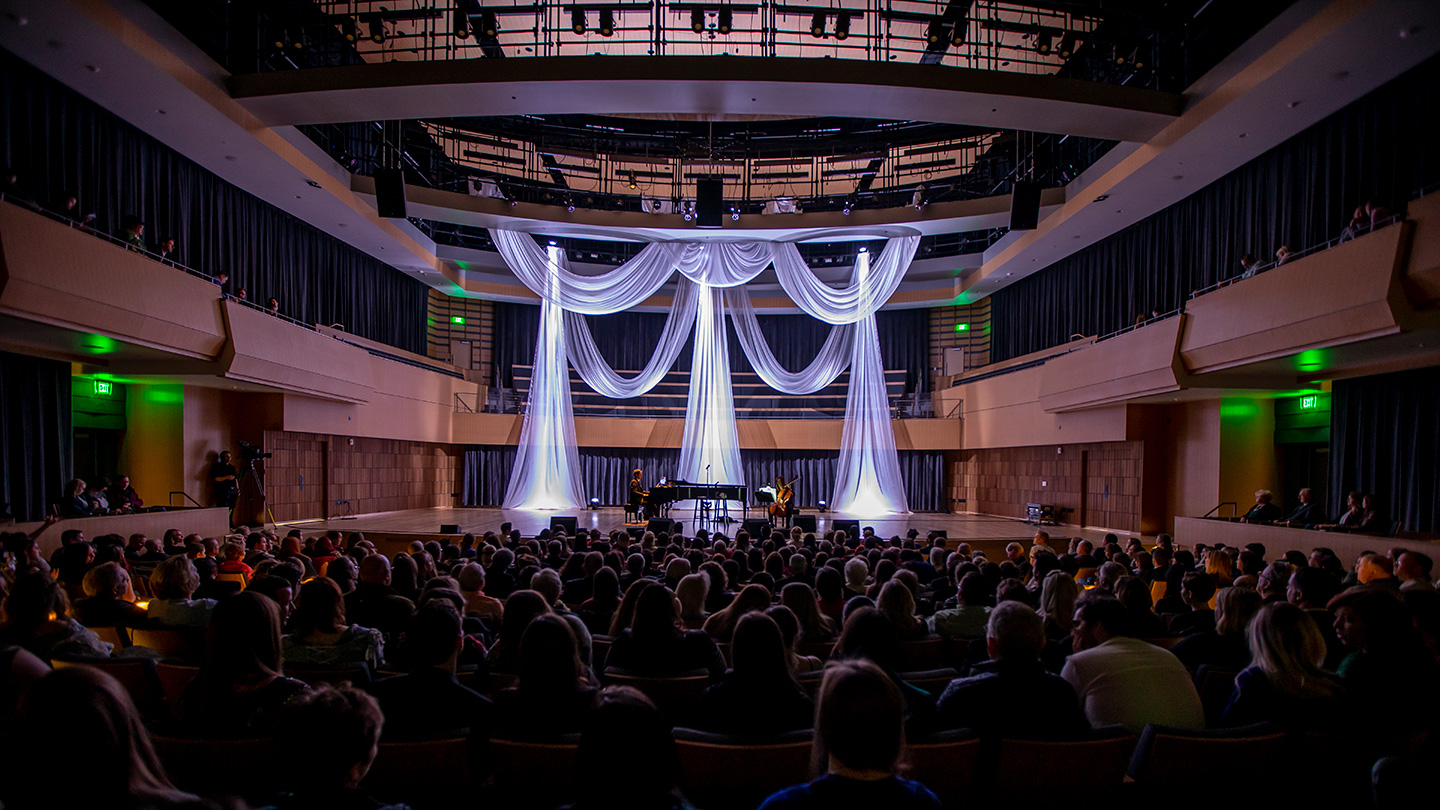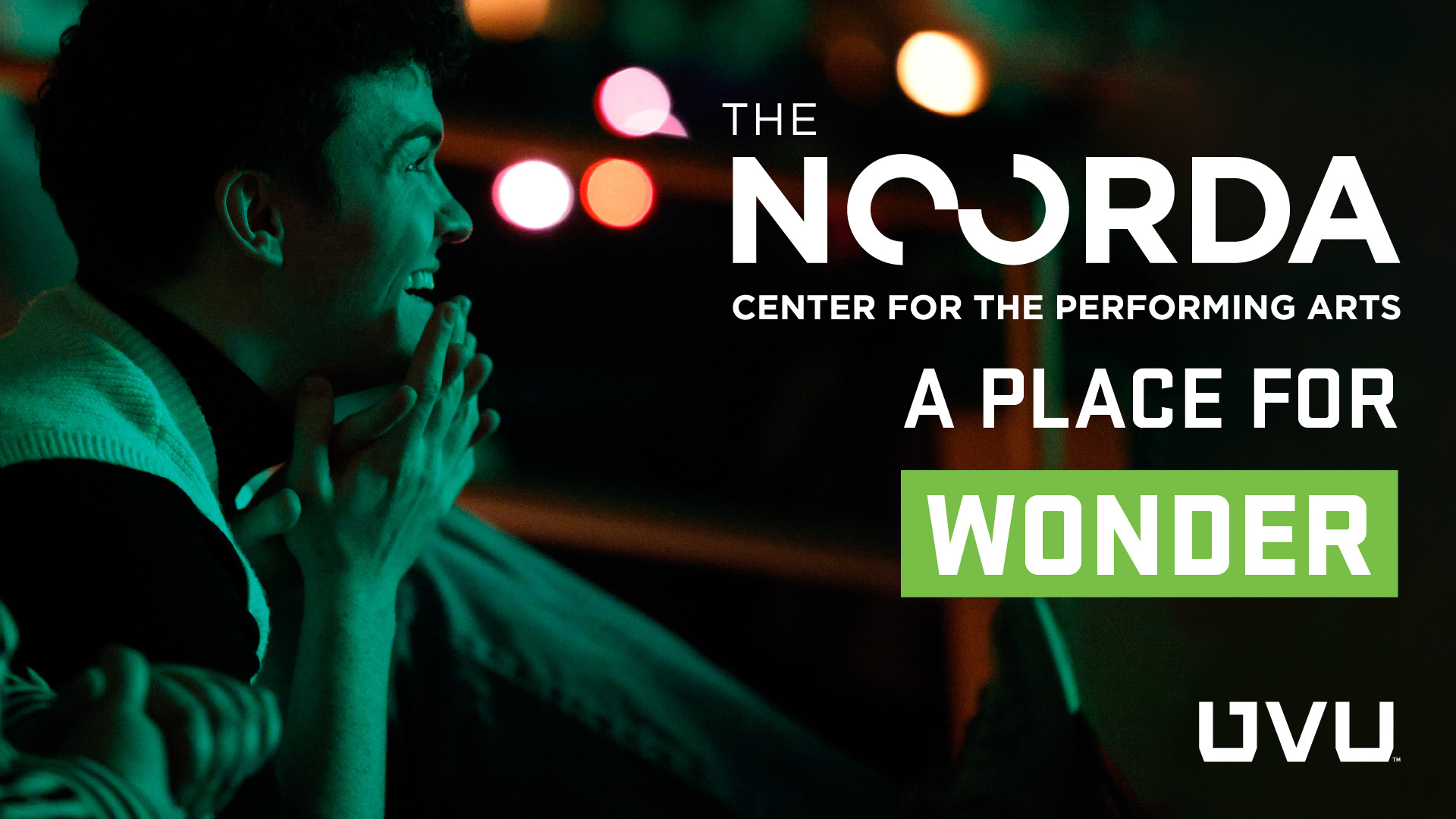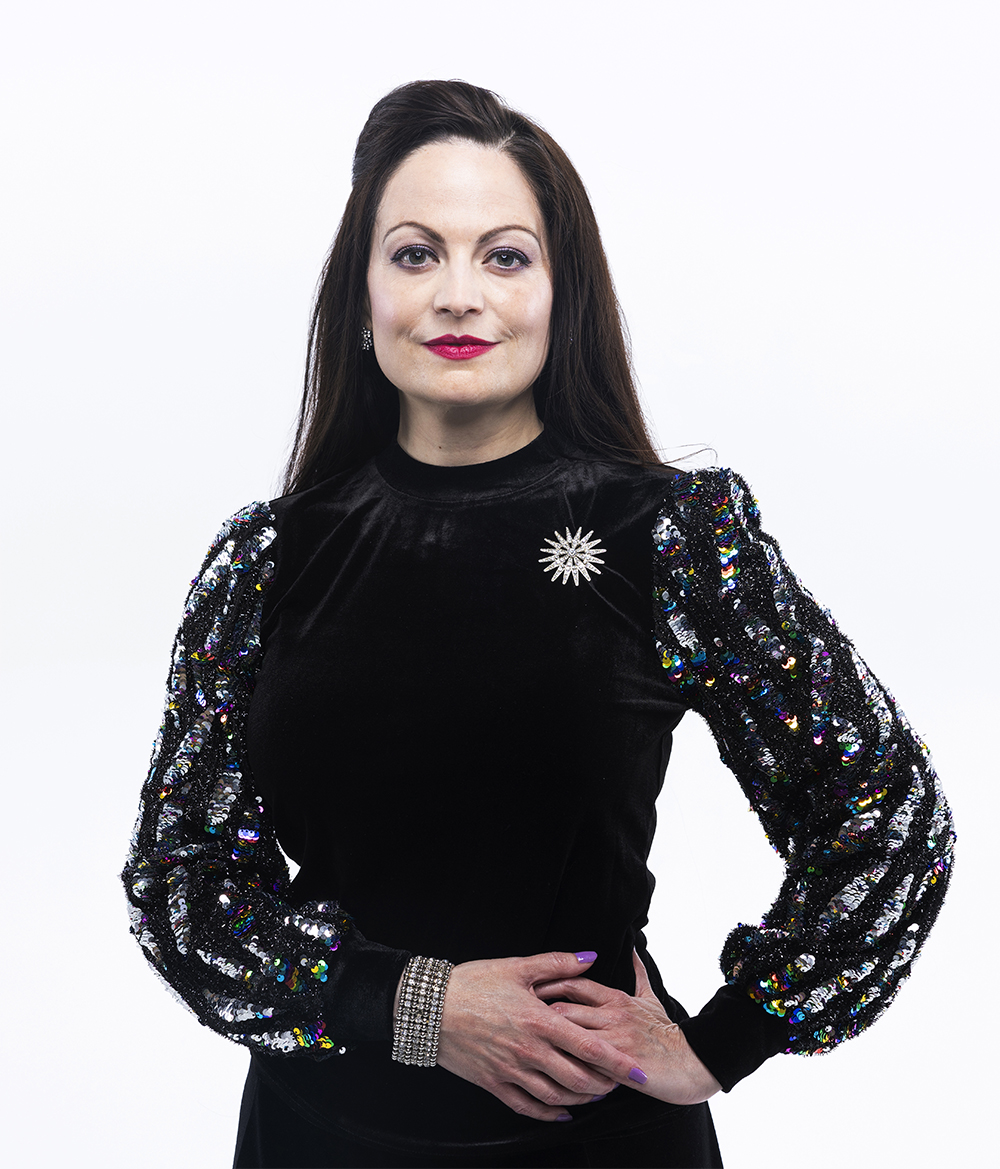L’Histoire du Soldat [The Soldier’s Tale] (1918)
Igor Stravinsky (1882-1971)
I. Marche du Soldat [The Soldier’s March]
II. Petits Airs [Airs by a Stream]
III. Pastorale
IV. Marche Royale [The Royal March]
V. Petit Concert [The Little Concert]
VI. Trois Dances [Three Dances]
Tango
Waltz
Ragtime
VII. Danse du Diable [The Devil’s Dance]
VIII. Grand Choral [Great Chorale]
IX. Marche Trimophale du Diable
The Triumphal March of the Devil]
Toward the end of World War I, Stravinsky was facing the harsh realities of economic deprivation: payments from his German publishers were being held back, and the Russian Revolution had cut off his income from the family estate. Sensing disaster, Stravinsky, ever a pragmatist, formulated with his friends, writer C.F. Ramuz and conductor Ernest Ansermet, a plan to get himself out of this vexing situation.
As he explained it: “Ramuz and I got hold of the idea of creating a sort of little traveling theater, easy to transport from place to place and to show in even small localities.” Thus out of necessity came the chamber-sized neo-classic orchestra. As for their first project, Stravinsky recalled, “We were particularly drawn to the cycle of legends dealing with the adventures of the soldier who deserted, and the Devil who inexorably comes to carry off his soul.” Armed with the fool-proof dramatic stuff of the Faust story, the two created The Soldier’s Tale, “to be read (Narrator, Soldier, Devil), played, and danced (Princess).”
Stravinsky and Ramuz plunged into their tasks of creating, respectively, music and libretto, with the composer assisting considerably in the latter. The score emerged a marvel of economy and ingenuity, foregoing the large ballet orchestra of The Firebird, Petrushka, and The Rite of Spring. The composer reasoned that he would have to select a group of instruments that could include the most representative types, in treble and bass, of the different instrumental families. Stravinsky’s own trio arrangement of the work seems to have evolved as something of a sentimental/ economic compromise, having been made for the benefit of Werner Reinhart, an amateur clarinetist who had “paid for everybody and everything, including the music” involved in the work’s first production, in Lausanne in September 1918.
In his Chronicle, Stravinsky explains that he had considered using the piano in his original scoring, but decided against it for a number of reasons. His motive for the transcription aside, the Suite in trio form has clearly afforded the music the opportunity for extensive exposure. Either in its original version for seven musicians or the trio arrangement, the music itself has a raw, biting edge that slices away any and all vestiges of Romanticism, exposing a sardonic heart that beats with constantly shifting rhythmic accents, is propelled by obsessive ostinatos (a device to which the composer was dedicated throughout his life), and sets up dissonances that crackle abrasively within an essentially diatonic harmonic structure.
-Program Notes by Orrin Howard
Tonight’s performance of The Soldier’s Tale will be the concert suite with light narration, in all about 30-40 minutes in duration.
Dr. Jeffrey O’Flynn
Clarinet
Leon Chodos
Bassoon
Dr. Ryan Nielsen
Trumpet
Preston Judd
Trombone
Dr. Shane Jones
Percussion
Dr. Donna Fairbanks
Violin
Andrew Keller
Bass
Julia Taylor
Narrator
Dr. Christopher Ramos
Conductor

As we prepare to welcome the community to experience the wonder at The Noorda, I’d like to thank you for making it all possible.
The performing arts inspire us to engage with others, discover new ways of thinking and feeling, and provides us with hope—in short, we believe the arts transform you. As an exciting hub for the arts in Utah County, we produce hundreds of performances by talented students, faculty, and world-renowned visiting artists. We invite everyone to join in connecting through the arts.
As part of UVU’s inaugural EverGREEN fundraising campaign, I invite you to make a gift to UVU’s Noorda Center for the Performing Arts today.
Your gift impacts not only students, but everyone who comes to The Noorda by ensuring programming and exciting artistic creation continues.
Please make a gift today by clicking below. Thank you!


The arts possess the sublime power to inspire, engage, and transform. Just as a solitary note holds the ability to captivate, a single voice, gesture, or melody possesses the ineffable power to carry us away.
We invite you to embark upon a new journey with us this season at The Noorda Center—home to inspiring events and an exciting hub for the arts in Utah County. Our mission is to produce and present artistic excellence, which would not be possible without the generous support of our donors and sponsors. We thank them and express our deep gratitude to all patrons, supporters, and friends of The Noorda Center.
Thank you for journeying with us this season to experience the profound and transformative power of the arts! —Courtney R. Davis, Dean, School of the Arts
Courtney R. Davis, J.D., M.A.
Dean, School of the Arts
Department Chair
JEFFREY O'FLYNN
Associate Chair
MELISSA HEATH
Administrative Assistant
CHRIS GINES
Choirs
REED CRIDDLE
CHERILYN WORTHEN
Orchestra/Cello
CHEUNG CHAU
Violin
DONNA FAIRBANKS
Clarinet
JEFFREY O’FLYNN
Trumpet/Music Theory
RYAN NIELSEN
Percussion
SHANE JONES
Piano
HILARY DEMSKE
Jazz/Commercial
DAVID BAKER
Voice
MELISSA HEATH
ISAAC HURTADO
Commercial Music
CHARLIE HAN
TODD SORENSEN
Theory
BRYCE RYTTING
Musicology
ROSS HAGEN
Director of Bands
CHRIS RAMOS